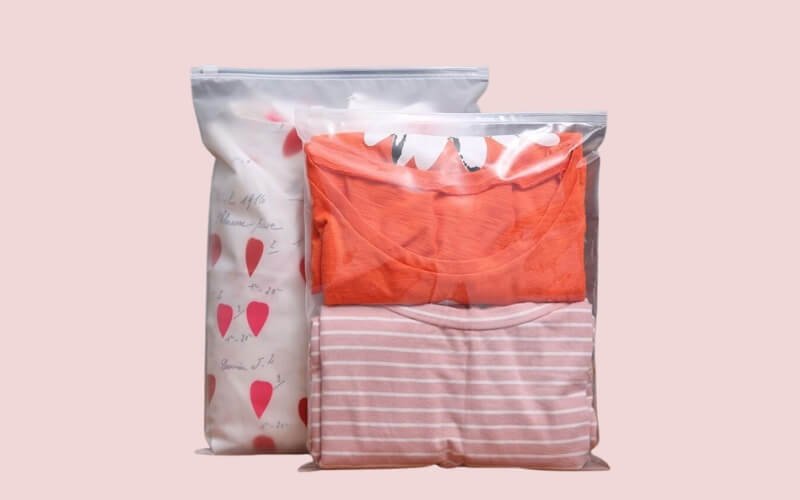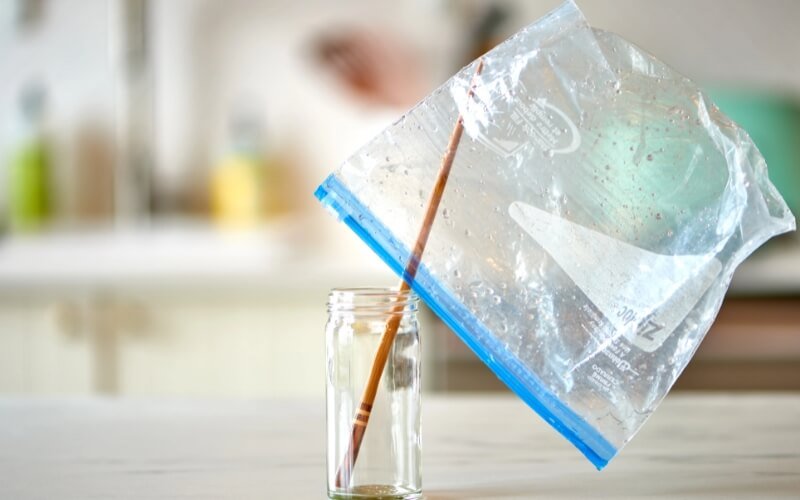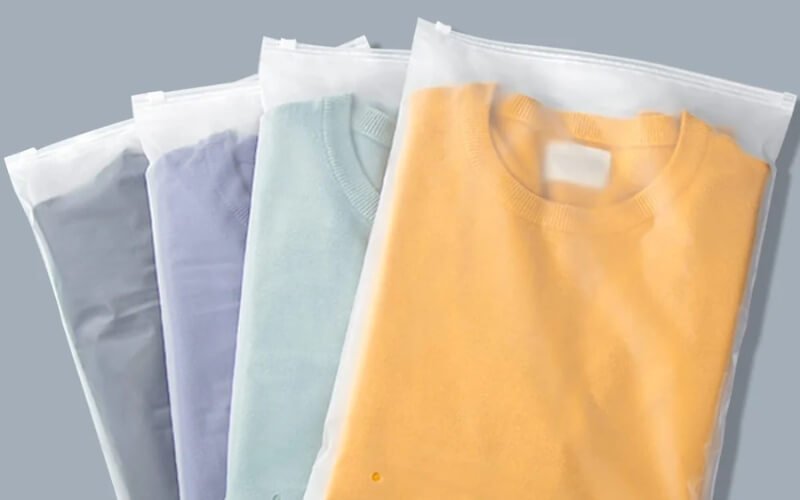Zipper Bag Care: Tips for Long – Lasting Use
Zipper bags are incredibly useful in many aspects of business and daily life, from packaging products to organizing items on the go. However, it’s a common frustration to see these bags quickly become damaged, stained, or difficult to store properly. This can lead to unnecessary costs for businesses, increased waste, and the ongoing hassle of constantly replacing them.
This guide is designed to provide you with practical, expert tips to significantly extend the life of your zipper bags. By implementing these simple strategies, you can save money, minimize your environmental impact, and enhance the efficiency of your organizational systems. We will explore effective methods for preventing damage, tackling tough cleaning challenges, and optimizing storage solutions to ensure your zipper bags last longer and remain reliable.
1. Understanding your zipper bags
1.1 Different types of zipper bags
When you think of zipper bags, you might picture a simple plastic pouch. However, the reality is that these bags come in a surprisingly wide array of materials, each designed with specific characteristics and uses in mind. One of the most common materials you’ll encounter is polyethylene (PE). This plastic is favored for its versatility and affordability, making it a go-to option for many everyday applications.
Within the polyethylene family, there are variations tailored for different needs. Low-density polyethylene (LDPE) stands out for its flexibility and cost-effectiveness. You’ll often find LDPE in bags designed for general use, like sandwich bags, where a soft touch and ease of handling are beneficial.
On the other hand, linear low-density polyethylene (LLDPE) is engineered for enhanced durability, particularly at low temperatures and against punctures. This makes LLDPE the preferred choice for freezer bags, where maintaining integrity in cold environments is crucial.
Beyond polyethylene, silicone emerges as a robust and heat-resistant alternative to traditional plastics. Silicone bags are known for their exceptional reusability and ability to withstand high temperatures. This heat resistance makes them incredibly versatile, suitable for applications ranging from sous vide cooking and food storage to general organization.
Silicone bags are also appreciated for their flexibility, stain resistance, and non-porous nature. This non-porous quality is particularly advantageous as it helps prevent bacterial growth, making silicone a hygienic option. While generally more expensive than polyethylene options, their durability and versatility often justify the investment.
Another important factor influencing a zipper bag’s performance is its thickness. Generally, thicker bags offer increased puncture resistance and are better suited for holding heavier items or enduring frequent use. Therefore, considering the intended application is key when selecting the appropriate thickness.
Finally, the variety of sizes and shapes available in zipper bags is extensive. From small, snack-sized pouches to large, gallon-sized bags, you can find a zipper bag to meet a wide spectrum of needs. This range in sizing is essential for efficient space utilization and effective organization of diverse items, whether it’s small personal items or larger supplies for food storage or specific projects. This adaptability in size and shape truly makes zipper bags a remarkably versatile solution for storage and transport across various industries, including garment businesses needing reliable packaging solutions.

1.2 Common uses and applications
Zipper bags are essential for businesses and individuals alike, offering a versatile solution for organizing and protecting a wide range of items. Their primary advantage lies in garment and apparel packaging. Zipper bags keep clothing items clean, neatly folded, and shielded from dust, moisture, and wrinkles during storage and shipping. This is crucial for maintaining the quality and presentation of apparel, whether it’s for personal use, retail display, or e-commerce fulfillment.
The secure closure of zipper bags also provides added protection during transit, preventing items from shifting or becoming damaged. Their transparent design, often available in frosted or clear options, allows for easy identification of contents without needing to open the bag, streamlining inventory management and order fulfillment. This feature is a significant advantage for clothing businesses.
While ideal for apparel, zipper bags also offer benefits for organizing other items. From travel essentials to craft supplies and important documents, their versatility extends to various storage needs. However, their strength lies in their ability to keep garments in pristine condition, making them a go-to choice for anyone handling clothing.

2. Cleaning your zipper bags for longevity
2.1 Hand washing techniques
Proper cleaning is essential for extending the lifespan of your reusable zipper bags and maintaining their functionality. Hand washing is often the recommended method for most zipper bags, particularly those made of delicate materials or with intricate designs. Follow these steps for a thorough and effective cleaning:
First, rinse the bag thoroughly with warm water. This initial step removes loose debris and food particles, preparing the bag for a more thorough cleaning. Next, gently apply a small amount of mild dish soap to the interior and exterior surfaces of the bag.
Avoid using harsh chemicals or abrasive cleaners, as they can damage the material or leave behind lingering residue. Gently scrub the interior and exterior surfaces, paying close attention to the corners and the zipper seal, which often accumulate dirt and debris.
To effectively clean hard-to-reach corners and crevices, use a soft-bristled brush or a small, specialized cleaning tool. This gentle scrubbing action will loosen and remove any stubborn dirt or dried food particles. Rinse the bag thoroughly under warm running water until all traces of soap are gone.
Ensure that no soapy residue remains, as this can lead to discoloration or odor issues over time. Mild dish soap is ideal for this purpose, as it effectively cleans without being harsh on the material.

2.2 Dishwasher-safe zipper bags: A guide
Not all zipper bags are dishwasher-safe, so careful inspection is crucial before loading them into the machine. Look for a clear “dishwasher-safe” label or a symbol (often a square with dishes and/or water droplets inside) on the bag itself or on the packaging. This visual cue indicates the bag’s compatibility with the cleaning process.
If the bag is marked as dishwasher-safe, follow these instructions for proper placement within the dishwasher: Place the bag(s) on the top rack, ensuring they are away from any heating elements or direct contact with the bottom of the rack. This careful placement prevents potential damage from high heat. Avoid stacking bags too tightly to allow for proper water circulation and cleaning.
Important precautions are necessary for using a dishwasher to clean zipper bags. Avoid using high-heat settings or harsh detergents, which can potentially melt or damage the bag’s material over time. Choose gentle detergents specifically designed for delicate items or dishes, ensuring the material’s integrity. Following these precautions will help maintain the bag’s condition and longevity.

2.3 Dealing with stains and odors
Stubborn stains on your reusable zipper bags can be a persistent problem, but effective solutions exist. For stubborn stains, create a paste using baking soda and water. Apply the paste directly to the stained area, allowing it to sit for several minutes to loosen the stain. Gently scrub the area with a soft brush or sponge, being careful not to damage the bag’s material. Rinse thoroughly with warm water to remove all residue.
To address lingering odors, a solution of equal parts warm water and white vinegar, or a paste of baking soda and water, can be highly effective. Submerge the bag in this solution for 30 minutes to an hour, allowing the vinegar to neutralize the odor-causing molecules. After soaking, wash the bag as usual and allow it to air dry completely. This method often effectively eliminates odors without harsh chemicals or harsh scrubbing.
3. Proper storage for maximum lifespan
3.1 Drying zipper bags completely
Thorough drying of your reusable zipper bags is crucial for preventing the growth of mold and mildew, which can significantly compromise the bag’s structural integrity and hygiene. Moisture trapped inside the bag creates an ideal environment for these microorganisms to thrive, potentially damaging the material and causing unpleasant odors. Proper drying, therefore, is essential for maintaining the bag’s overall condition and longevity.
Several methods can effectively dry zipper bags. Air drying, by propping the bags open or using a drying rack designed for reusable bags, is often the recommended method. Hang the bag open, or ideally, upside down, allowing air to circulate freely around the entire bag. This method ensures that moisture evaporates completely, minimizing the risk of mold or mildew development.

3.2 Preventing zipper damage
Preventing zipper damage is key to extending the lifespan of your reusable zipper bags. Gentle handling is crucial. Open and close zippers gently, avoiding forceful pulling or tugging, which can stress the zipper mechanism and lead to premature wear and tear. A consistently gentle approach helps maintain the zipper’s integrity, ensuring smooth operation for many uses.
If your zipper is experiencing problems, lubrication can help maintain its smooth operation. Applying a small amount of beeswax or a dedicated zipper lubricant can significantly reduce friction, allowing the zipper to glide more easily and preventing jamming. This proactive approach is often more effective than trying to fix a problem zipper after it’s already broken.
Overfilling your zipper bag places unnecessary strain on the zipper. This strain can compromise the zipper seal and potentially cause the zipper to break or separate entirely. Properly portioning items to avoid overfilling is key to ensuring that the zipper does its job without undue stress. This helps maintain the bag’s structural integrity and ensures longevity.
3.3 Avoiding punctures and tears
Protecting your zipper bags from punctures and tears is crucial for maintaining their longevity and usability. A key preventive measure is to store sharp objects—knives, scissors, or other potentially damaging items—separately from your zipper bags. Storing these items in containers specifically designed for them minimizes the risk of accidental punctures or tears in the bags. This careful separation is a simple but effective way to protect your zipper bags.
Appropriate bag size selection is also crucial. Avoid the temptation to cram bulky or oversized items into bags that are too small. This often leads to stretching and stressing the bag’s material, significantly increasing the risk of tears or punctures. Choose a bag that appropriately accommodates the item you’re storing to avoid putting undue stress on the material.
Furthermore, gentle handling is essential to prevent accidental punctures and tears. Avoid rough handling or dropping the bags, as this can lead to significant damage, particularly along the seams or zipper areas. A consistently mindful approach to handling the bag minimizes the likelihood of causing damage to the bag’s structure. Gentle handling, therefore, is an essential part of proper care and maintenance.

3.4 Heat and zipper bags: What to avoid
High heat poses a significant threat to the integrity of zipper bags. Microwaving, boiling, or exposing bags to extremely hot water can lead to warping, melting, or the release of potentially harmful chemicals from the bag’s material. It’s crucial to avoid such practices, as these extreme temperatures can compromise the bag’s structural integrity and potentially affect the safety of any contained food.
To ensure the safe use of your zipper bags, always refer to the manufacturer’s instructions for specific temperature limitations. These guidelines will offer precise information on the maximum safe temperatures for each material, preventing unforeseen damage.
Generally, it’s advisable to avoid using zipper bags for any cooking or reheating processes in the microwave, oven, or with boiling water. This precautionary measure will help maintain the bag’s integrity and prevent potential harm.

4. FAQs about zipper bag care and maintenance
4.1 Can I freeze zipper bags?
Many zipper bags are freezer-safe, particularly those designed for food storage. However, it’s essential to check the packaging for specific instructions. Using freezer-grade bags is often recommended, as they’re specifically engineered to withstand the rigors of freezing temperatures and are designed to minimize freezer burn. This is key for preserving the quality and freshness of the stored food.
4.2 How do I remove strong food odors from zipper bags?
Persistent food odors in your zipper bags can be effectively neutralized by a simple soaking solution. A mixture of water and white vinegar or baking soda can help break down and remove the odor-causing molecules. Soaking the bag in this solution for a few hours, followed by a thorough washing with soap and water, and then allowing it to air dry completely, often eliminates the lingering scent.
4.3 Are zipper bags recyclable?
The recyclability of zipper bags is often limited. While technically made from recyclable plastic (usually #2 HDPE or #4 LDPE), many recycling programs do not accept them due to their tendency to clog machinery. Check the packaging for a recycling symbol and number, which will indicate the type of plastic and potentially its recyclability. If in doubt, contact your local recycling center directly to confirm whether they accept that specific type of plastic for recycling.
4.4 How many times can I reuse a zipper bag?
Proper care and maintenance significantly extend the lifespan of a high-quality zipper bag, allowing for numerous reusable cycles. With diligent use and regular inspections, many bags can be reused dozens of times. Regularly check for signs of wear, such as holes, tears, or a malfunctioning zipper, discarding the bag when damage becomes significant.
4.5 What is the best way to store zipper bags to keep them organized?
For easy access and a tidy storage solution, storing zipper bags flat in a drawer, organized by size, is an excellent approach. This method keeps bags neatly arranged, minimizing creases and maximizing space utilization.
Alternatively, if space allows, a magazine holder, a designated box, or a similar container can be used to store bags upright, which can be especially helpful for keeping smaller bags organized. This method allows for quick retrieval and helps maintain the bags’ appearance and integrity.
5. Packlove – Providing custom zipper bags for your brand
Discover Packlove’s premium range of zipper bags, designed to elevate your packaging and organization. Whether you’re a clothing brand seeking to enhance your product presentation or an individual looking for reliable storage solutions, our zipper bags offer the perfect blend of functionality and style. We provide a variety of sizes, materials, and closure types to meet your diverse needs, with options for customization to perfectly reflect your brand.
Read more:
Proper care and maintenance are key to maximizing the lifespan and usefulness of your reusable zipper bags. This article has outlined various techniques for extending their life, encompassing cleaning methods, storage strategies, and damage prevention tips. By implementing these practices—such as gentle handling, appropriate storage, and thorough cleaning—you can significantly extend the useful life of your zipper bags.
This approach translates to substantial cost savings from reduced replacement needs, waste reduction through extended use, and a greater degree of environmental responsibility. Putting these tips into practice will not only save you money but also contribute to a more sustainable lifestyle.






















